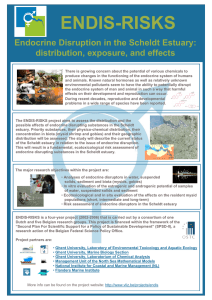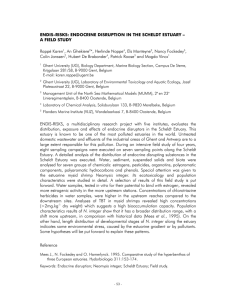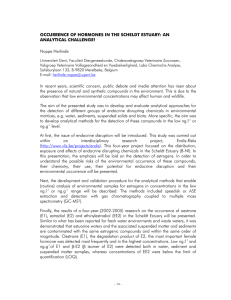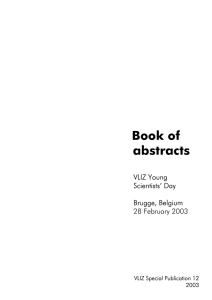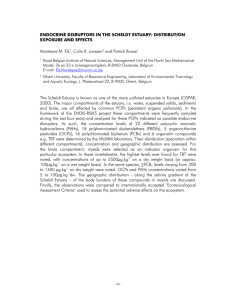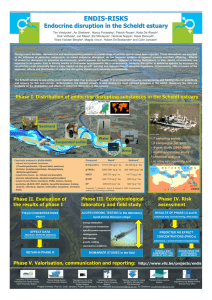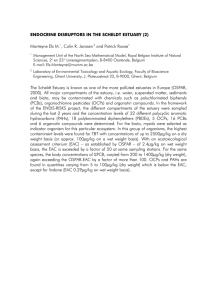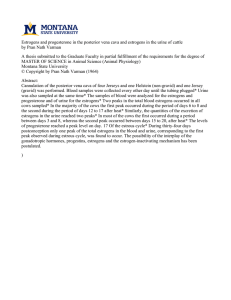Noppe Herlinde , Sofie Poelmans , Nathalie Van Hoof
advertisement
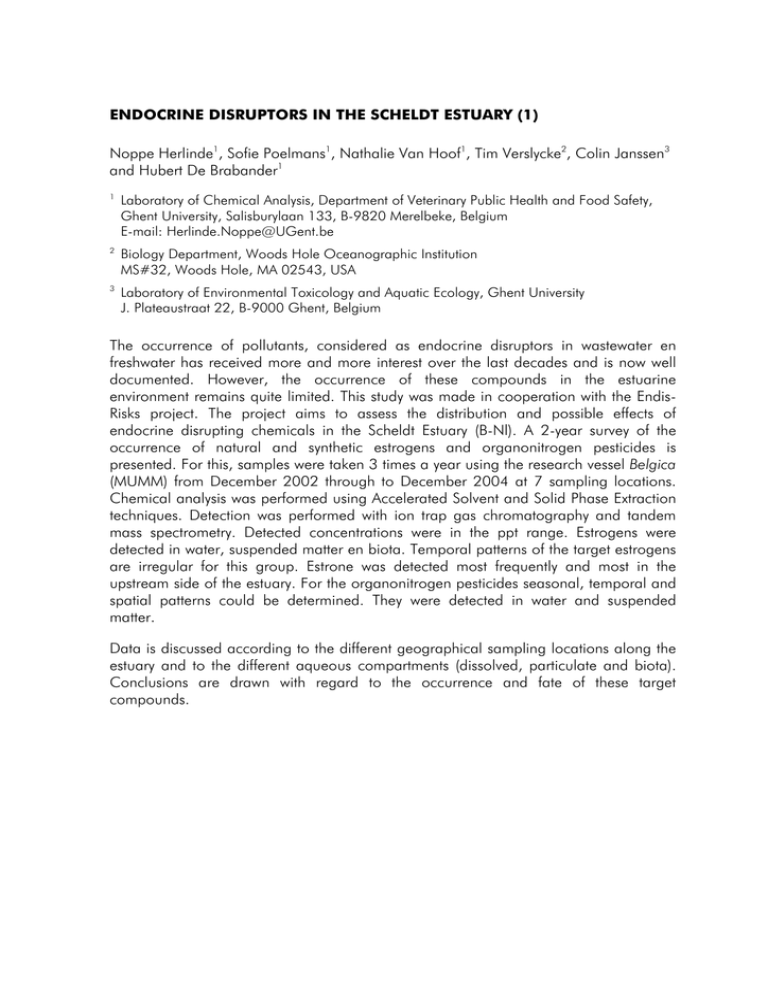
ENDOCRINE DISRUPTORS IN THE SCHELDT ESTUARY (1) Noppe Herlinde1, Sofie Poelmans1, Nathalie Van Hoof1, Tim Verslycke2, Colin Janssen3 and Hubert De Brabander1 1 Laboratory of Chemical Analysis, Department of Veterinary Public Health and Food Safety, Ghent University, Salisburylaan 133, B-9820 Merelbeke, Belgium E-mail: Herlinde.Noppe@UGent.be 2 Biology Department, Woods Hole Oceanographic Institution MS#32, Woods Hole, MA 02543, USA 3 Laboratory of Environmental Toxicology and Aquatic Ecology, Ghent University J. Plateaustraat 22, B-9000 Ghent, Belgium The occurrence of pollutants, considered as endocrine disruptors in wastewater en freshwater has received more and more interest over the last decades and is now well documented. However, the occurrence of these compounds in the estuarine environment remains quite limited. This study was made in cooperation with the EndisRisks project. The project aims to assess the distribution and possible effects of endocrine disrupting chemicals in the Scheldt Estuary (B-Nl). A 2-year survey of the occurrence of natural and synthetic estrogens and organonitrogen pesticides is presented. For this, samples were taken 3 times a year using the research vessel Belgica (MUMM) from December 2002 through to December 2004 at 7 sampling locations. Chemical analysis was performed using Accelerated Solvent and Solid Phase Extraction techniques. Detection was performed with ion trap gas chromatography and tandem mass spectrometry. Detected concentrations were in the ppt range. Estrogens were detected in water, suspended matter en biota. Temporal patterns of the target estrogens are irregular for this group. Estrone was detected most frequently and most in the upstream side of the estuary. For the organonitrogen pesticides seasonal, temporal and spatial patterns could be determined. They were detected in water and suspended matter. Data is discussed according to the different geographical sampling locations along the estuary and to the different aqueous compartments (dissolved, particulate and biota). Conclusions are drawn with regard to the occurrence and fate of these target compounds. - 50 -
